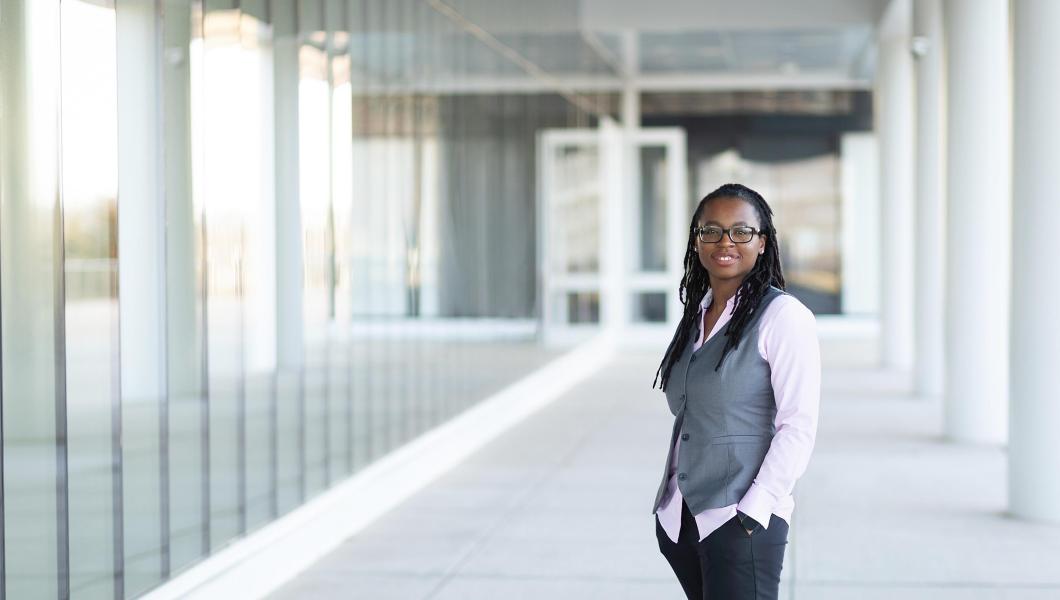"Abstract Geometries" Exhibit Debuts in Hillier College Gallery

The Hillier College of Architecture and Design Gallery at NJIT opened its doors to its spring exhibition featuring professional artists Gianluca Bianchino and Kati Vilim. The works consist of abstract geometric paintings and wall reliefs in the manner of assemblage or multimedia sculpture.
Curated by Matthew Gosser, “Abstract Geometries” explores the similarities and differences between the works of Bianchino and Vilim throughout various phases of their careers. The works are hung throughout the space, not as separate entities, but as a continuous formal and conceptual narrative, presenting harmony as well as contrasting elements. The connective geometries, as well as color and use of space, will appear sometimes as minimalist nuances, other times as striking contrasting elements.
“There are some really stark differences between their work, but there are a lot of connective tissues that lend the work to be shown together,” said Gosser, who has been involved in the Newark art scene for nearly 20 years and where he became familiar with both Bianchino and Vilim.
2022-Gallery-HCAD-2951-004.jpg

Vilim’s abstract wall works focusing around color, composition and geometries appear to confound the flat canvas on which they lie, lifting off through intricate intersections, layers and overlaps.
2022-Gallery-HCAD-2943-001.jpg

Bianchinos contemporary works deal with more “tectonic” ideas, drawing a balance between order and disorder. Lighting, optics, and dimensionality offer viewers the chance to explore each work a little differently.
2022-Gallery-HCAD-2946-003.jpg

The exhibit, much like others before it in the gallery, draws parallels between the artists’ works and the studies of HCAD students. Foundational theories of design, composition, color theory are explored in this exhibit, and offered in classes for up-and-coming artists, designers and architects.
“Our students can take something from this on a very basic and fundamental level, and it’s why this is a good show for this gallery,” added Gosser.
The exhibit is open Monday through Friday, 9:30 a.m. to 4:30 p.m., and closes March 27. The closing day will feature an artist talk beginning at 2 p.m. For more information, contact Matthew Gosser at mlg2@njit.edu.
About the Artists
Gianluca Bianchino
Bianchino’s artwork is an attempt to contain chaos in an ordered aesthetic. Process and engagement with traditional and industrial materials conflate with science and architecture in an exploration of the underlying geometry of nature and the built environment.
The resulting artwork is set in a metaphysical context that is often ambiguous with works resembling alien landscapes, star maps to unspecified regions of space, or abstract structures alluding to probes and satellites. His practice is eclectic and frequently generative. Temporary installations produce photographs, videos, and/or parts that reappear in later sculptures, and vice versa; sculptures may appear in larger multimedia configurations.
In his artistic process, sculpture, photography, video, and drawing/painting mimic each other within a self-referential hybrid vernacular of assemblage and trompe l'oeil. Current bodies of work are–interactive optical sculptures, unstable topographical surfaces, and installations intended to present chaos as a believable visual system.
Kati Vilim
Vilim creates abstract images. The type of abstraction that she creates doesn’t happen through the reduction of something visible, it is created through visual ideas — originated in the invisible part of the world — much like music, or mathematics. These ideas become visible through the compositions built from more or less complex geometric forms, transparency, color, structure, ratio or rules as repetition, symmetry etc.
The expression of inner thoughts is transposed and the flow of information presumes transmitters, by various mediating agents, composed of abstract language systems, such as a spoken or written language, music or mathematics. These language systems possess numerous common features, e.g. structure, rhythm and ratio are found in all that then become the elements, with the addition of color that her compositions are based on.

